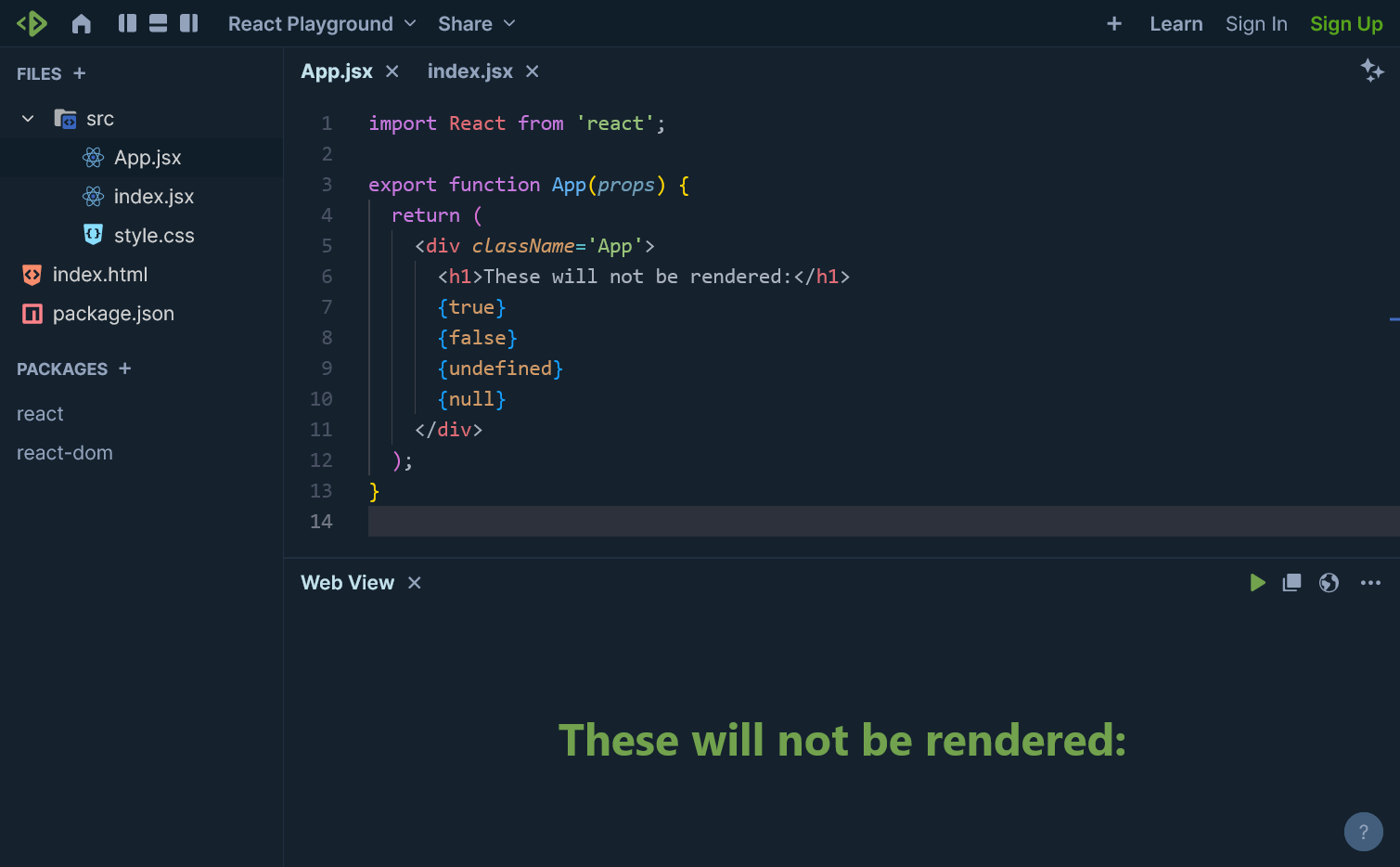Falsy React Elements
Published Mar 30, 2024If you were to render this React component, what would you expect to see?
const someValue = -1;
function MyComponent(props: {}) {
return <div>{someValue > 0 && "Hello World"}</div>;
}
If you have been programming in React for a while, you're probably familiar with components like this, and you'd expect just to see an empty <div></div> block in your page.
But something is happening here that isn't 100% obvious. The expression inside those curly braces will evaluate to a value, false, so why do we not see false rendered inside the div?
If you throw the example into the TypeScript playground, you can see that when this JSX is compiled down to JavaScript the condition is preserved:
"use strict";
const someValue = -1;
function MyComponent(props) {
return React.createElement("div", null, someValue > 0 && "Hello World");
}
So when this is evaluated at run-time, the condition would be evaluated and the false value will be passed on to React's createElement function as the 3rd argument.
Looking at the documentation for createElement, we can see that this 3rd argument is for the children of the (div) component:

Reading on, we can find description of the children parameter:
optional
...children: Zero or more child nodes. They can be any React nodes, including React elements, strings, numbers, portals, empty nodes (null,undefined,true, andfalse), and arrays of React nodes.
So from here we can see false is considered an "empty node", as will null, undefined and true. The first time I saw this I was slightly surprised that true was being treated in a similar way to false - I would've assumed that:
- Any falsy values are omitted from the output.
- Any truthy values are included in the output.
This is trivial to test though, for example using a React playground:

This is reflected in the TypeScript types for React as well:
/**
* Represents all of the things React can render.
*
* Where {@link ReactElement} only represents JSX, `ReactNode` represents everything that can be rendered.
*
* [...]
*/
type ReactNode =
| ReactElement
| string
| number
| Iterable<ReactNode>
| ReactPortal
| boolean
| null
| undefined
| DO_NOT_USE_OR_YOU_WILL_BE_FIRED_EXPERIMENTAL_REACT_NODES[
keyof DO_NOT_USE_OR_YOU_WILL_BE_FIRED_EXPERIMENTAL_REACT_NODES
];
If you want even more confirmation, React is open source and you can take a look at the code yourself. I think this is the place where react handles those empty nodes. undefined, true and false are mapped to null, and then checks on subsequent lines prevent any rendering for null elements.
- Writing
- TypeScript
- React